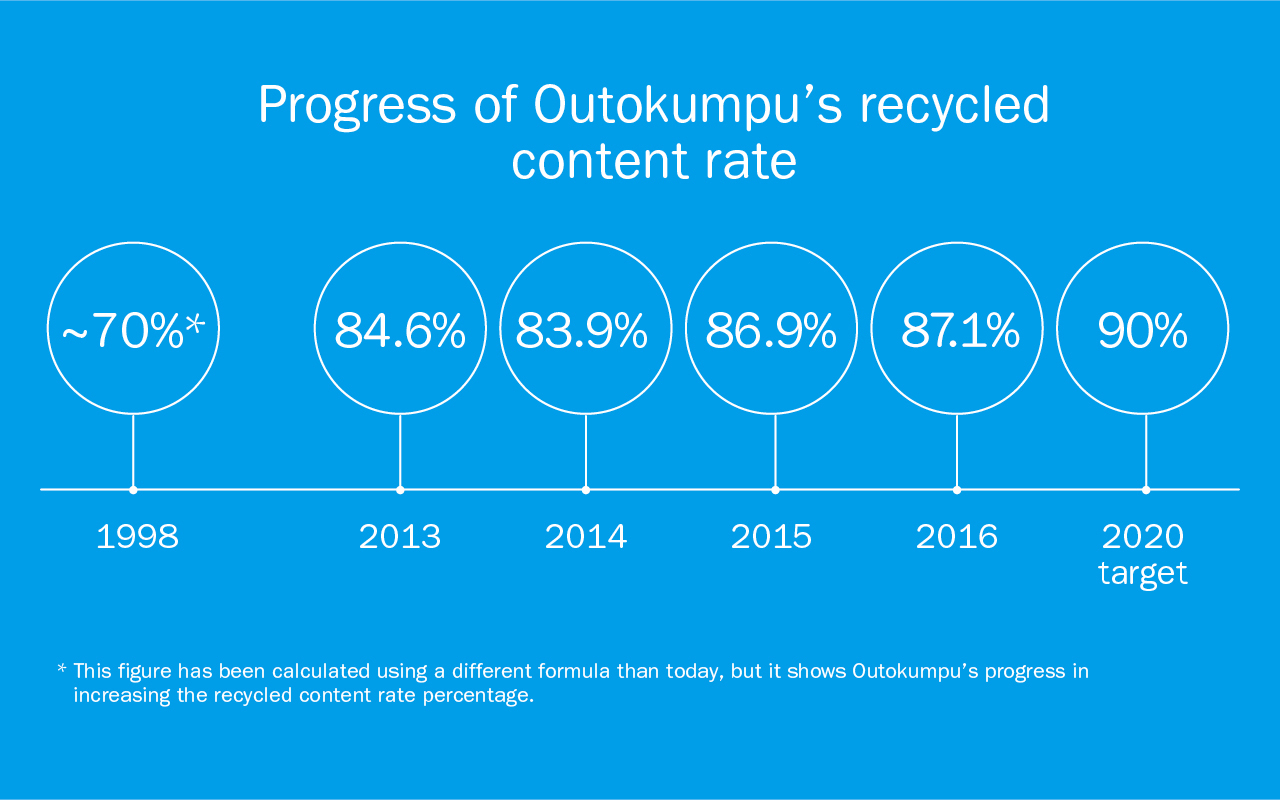Making every effort for high recycled content rate
Outokumpu’s long-term effort has raised its recycled content rate comparable high despite the global decrease. Although there is plenty of scrap available, finding scrap of right composition to match the production is more of a challenge.

At the end of the 1990s, the recycled content rate was approximately 70%, but since then Outokumpu has been able to raise it moderately according to target.
“Our target for 2016 was to raise the use of recycled content to 88% of our production. Even though we stayed slightly behind the target, it is still exceptional globally compared. In 2016 the recycled content was 87,1%,” says Camilla Kaplin, Outokumpu’s Senior Manager in Environment.
The recycled content rate includes all steel scrap that does not come from the same process that generated them, in addition to some waste streams recycled from different sources.
By 2020, Outokumpu’s target is to increase the recycled content to 90%
An ambitious target
Globally the use of recovered steel has been decreasing. In China, the biggest stainless steel producer in the world, the major part of stainless steel is currently based on virgin raw material. This is due to a very strong increase in production capacity, whereas the availability of scrap has not been at the same level.
In a global context, Outokumpu is aware of the demandingness of the recycled content rate target.
“We know it is extremely ambitious, taking that worldwide the recycled content is somewhere in the range of 50–60%. Even in Europe, where recycled content is generally higher than world average due to better availability of scrap, 90% is ambitious,” Kaplin says.
Outokumpu has managed to get the recycled content rate so high by turning all the production processes to use recovered steel as the main raw material, as long as it has been economically reasonable. When Tornio operations decided to increase the production, the new production line was optimised to use as much scrap input as possible.
Improving the quality assurance
On the other hand, Outokumpu also acknowledges that its recycling content might already be on the maximal level, depending on the future availability and the cost-efficiency. The main target in the upcoming years will be more connected to how to maximize the benefits of the recycled content, for example by thorough quality assurance.
“In general, the recycled stainless steel is the most cost-efficient option, and Outokumpu’s end customers always know that the material can be recycled again,” says Teijo Södervall, Outokumpu’s Vice President of Steel Melting Shop in Tornio operations.
According to Södervall, the availability of recycled content is enough in typical market situation, but the quality of the material varies. The supply chain for recycled stainless steel consists of buying the scrap from supplier who has gathered it from various material flows. These are all blend together and finding the useful scrap can cause challenges.
“Every received set has different blends so the quality assurance is essential in order to make high quality end products. For that reason, our aim is to improve the quality assurance even more in the future.”
Published helmi 24, 2017
